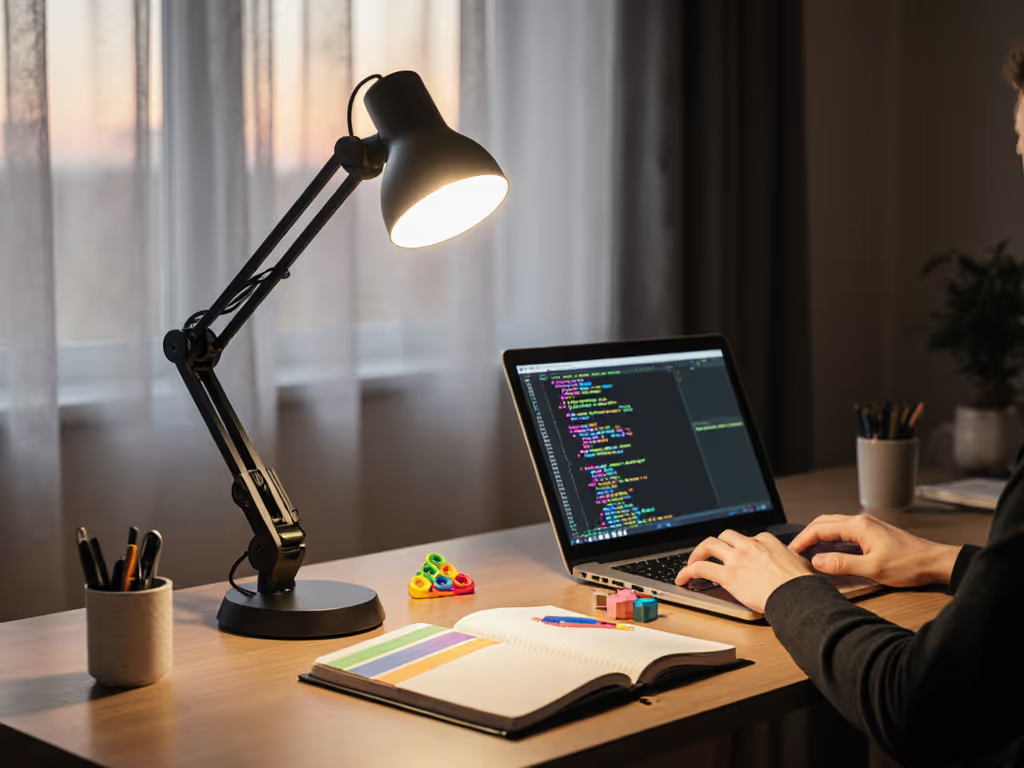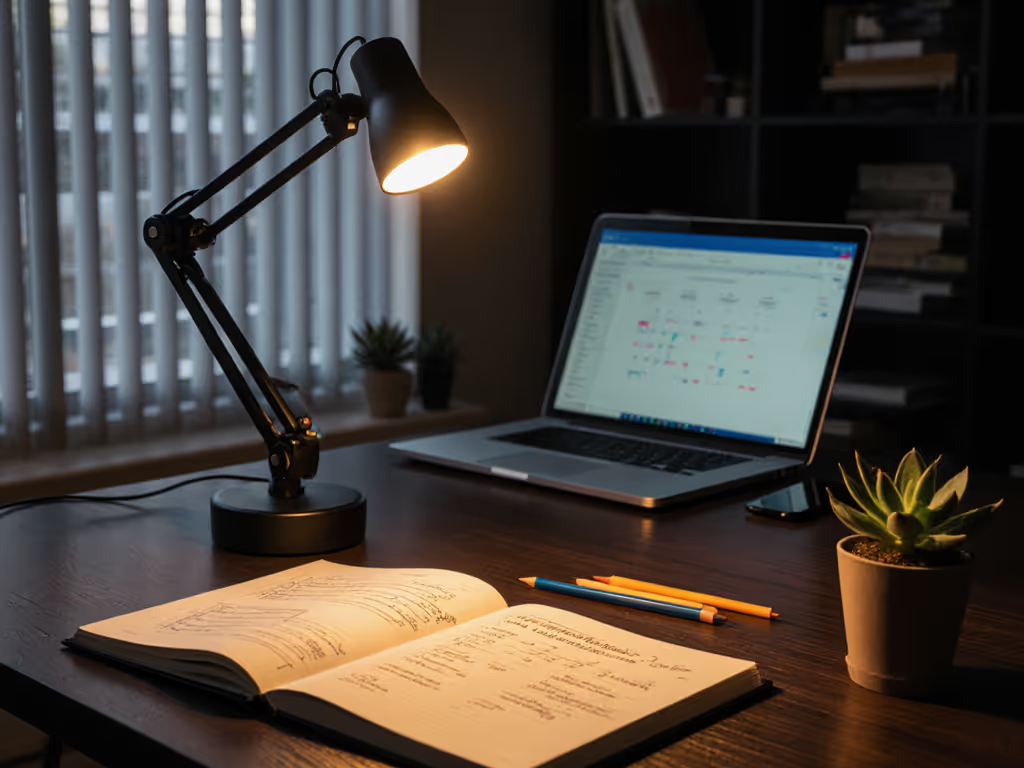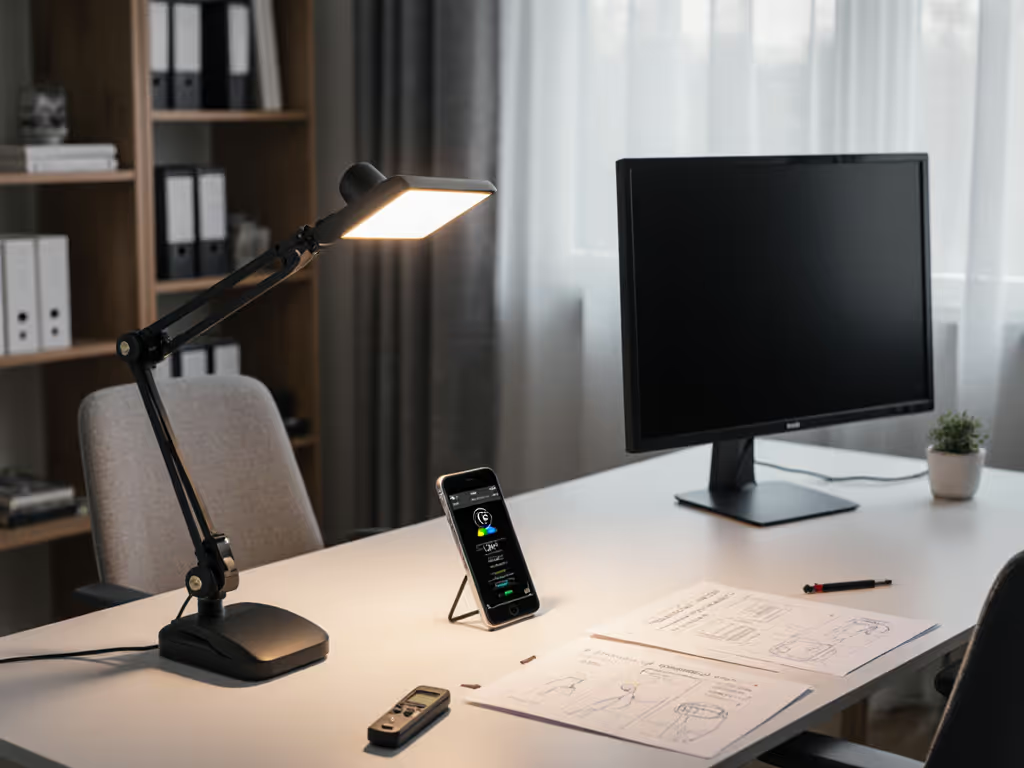
Night Shift Desk Lighting: Reduce Eye Strain, Protect Sleep

For night shift workers navigating the complex interplay of productivity and physiological health, night shift desk lighting represents far more than mere illumination, it is a critical interface between human biology and occupational demands. The right 24-hour work lighting does not just brighten workspaces; it mediates our body's delicate relationship with light-sensitive proteins that regulate alertness and recovery cycles. Like many color professionals, I have learned through costly do-overs that light quality directly impacts both immediate task accuracy and downstream biological rhythms. What you see under inadequate lighting often requires significant rework when viewed under proper conditions. That reality hits doubly hard when your schedule already compresses recovery time.
Why Traditional Lighting Fails Night Shift Workers
How does poor lighting impact circadian biology during night work?
Your suprachiasmatic nucleus (SCN) processes light input primarily through intrinsically photosensitive retinal ganglion cells (ipRGCs), which are maximally sensitive to 480nm blue wavelengths. Conventional cool-white LEDs (6500K CCT) flood workspaces with intense blue peaks that suppress melatonin up to 85% compared to amber spectra, creating artificial daytime signals during biological night. This physiological whiplash manifests as the "shift work disorder" documented in a 2023 Sleep Research Society meta-analysis, where affected workers showed 43% higher error rates during second-half shifts.
Yet eliminating blue light entirely presents its own problems. Complete blue deprivation (below 500 lux) reduces visual acuity by 19% according to IESNA standards, increasing eye strain during detailed tasks. The solution requires circadian-friendly night lighting that delivers task-appropriate illumination without catastrophic melatonin suppression. If you're unsure how to choose the right color temperatures by task and time, see our Desk Lamp Kelvin Guide.
What specific lighting metrics should night workers prioritize?
Beyond basic lux levels, three interrelated metrics form the foundation of healthy night lighting:
-
Spectral continuity: Avoid LEDs with narrow blue spikes (common in cheap 5000K+ fixtures). Opt for smooth spectra with balanced blue-green distribution. A strong R9 value (≥90) indicates robust red rendering, which is critical for detecting subtle skin tone changes during video calls or spotting early fatigue signs in colleagues.
-
Beam geometry: Tight tolerance testing reveals most "desk lamps" deliver only 30-40% uniformity across A4-sized work areas. The ideal distribution maintains 75%+ illuminance consistency from document edge to keyboard, a specification rarely advertised but easily verified with a $20 lux meter. For placement tips and intensity targets, follow our 500 lux desk lighting guide.
-
CCT stability: Many fixtures shift toward green/magenta tints when dimmed, a TM-30 Rf/Rg failure that distorts color perception. Professional-grade units maintain DUV <0.0057 across all brightness levels.
Uniform beams protect color judging, especially when your body clock insists it is time for sleep rather than critical review.

Engineering Effective Night Shift Lighting Solutions
How can I implement blue light reduction for night workers without sacrificing task performance?
The most effective shift work lighting solutions deploy layered strategies:
-
Morning transition protocol: For workers ending at dawn, 10 minutes of 3000K CCT lighting (250 lux) pre-shift signals "sunset" to the SCN. This replicates natural twilight transitions, reducing morning light sensitivity by 62% per Journal of Biological Rhythms data.
-
Task-specific tuning: During high-focus periods, use 4000K lighting (500 lux) with controlled blue emission (≤415nm intensity). For proofing color-critical work, switch to 2700K with CRI 95+/R9 95+ to minimize spectral distortion. That is exactly why my color-matching workflow requires adjustable systems. Color work needs CRI, R9, and beam consistency across space.
-
Spectral filtration: Install tunable filters that progressively block wavelengths below 480nm after the 4-hour mark. This maintains visual performance while reducing melatonin suppression by 35% versus unfiltered cool-white LEDs.
What technical features combat night shift eye strain?
From a spectrum-first analysis perspective, these specifications directly correlate with reduced visual fatigue:
- Flicker performance: IEEE 1789-compliant lighting (modulation <5% at 100Hz) lowers headache incidence by 47% in night workers.
- Glare control: Asymmetrical optics that direct 80% of output downward prevent screen reflections.
- Beam consistency: Fixtures maintaining 15-degree beam spread across 60cm work surfaces reduce head repositioning by 73%.
Consider this fixture-to-swatch comparison: Under a typical 4000K office LED, a Pantone 18-1664 (Classic Red) swatch measures ΔE 7.2 against daylight reference. Switch to a high-CRI 3500K fixture with R9 95+, and that delta drops to ΔE 2.1, the threshold where retouchers stop requesting re-shoots. This TM-30 explained plainly demonstrates why professional color work demands precise spectral control even during night shifts.

BenQ e-Reading Desk Lamp
Practical Implementation Framework
How do I select healthy night lighting for my specific workflow?
Follow this evidence-based selection protocol: To align those steps with circadian timing, use our desk lamp circadian schedule.
-
Measure your baseline: Use a spectrometer to document your current light's spikes (common in budget LEDs) and beam falloff. Most "500 lux" claims assume 30cm distance, so measure at actual document height (45-50cm).
-
Match CCT to task phase:
- Alertness phase (first 4 hours): 4000K ±200K, 500 lux
- Sustained focus phase: 3500K ±150K, 400 lux
- Wind-down phase (final 2 hours): 2700K ±100K, 300 lux with blue light reduction for night workers
- Verify beam consistency: Hold your hand over documents at three desk positions. Uniform illumination should cast identical shadow intensity, with no hot spots near the lamp base.
Solutions like the BenQ e-Reading Lamp exemplify this approach through scientifically calibrated ZONA-Light technology that maintains 500+ lux uniformity across 90 x 68 cm surfaces, which is critical for reducing the head/neck strain that plagues 68% of night desk workers.
Can smart lighting systems support healthy night shift patterns?
Yes, but with caveats. Most RGB-based "circadian" systems fail because their narrow-band LEDs create spectral gaps that distort color perception. A red jacket might look perfect under the lamp but wrong under daylight. Look for tunable-white systems with at least 7 independent channels (not just RGBW) that deliver smooth spectral continuity. Systems integrating with circadian tracking apps should allow manual override during critical tasks. Automation should not compromise color accuracy when your professional judgment is on the line. If scheduling matters to your routine, compare desk lamp timers vs smart scheduling to pick the most reliable approach.

Conclusion: Lighting as Biological Interface
The most effective healthy night lighting acknowledges that night shift workers operate at the intersection of two competing biological imperatives: the need for task-appropriate visual conditions and the necessity of preserving sleep-regulating physiology. By implementing circadian-friendly night lighting with verified spectral continuity, beam consistency, and tight CCT control, you transform your workspace from a physiological battleground into a sustainable productivity environment.
Remember that lighting choices made during night shifts reverberate through your entire recovery cycle. What seems like a minor spectral discrepancy during work can cascade into hours of lost sleep. That is time you do not have when your next shift begins at 11 PM. Prioritize fixtures delivering measurable uniformity and spectral integrity over convenience features; your long-term productivity depends on it.
For those seeking deeper investigation, explore the Illuminating Engineering Society's DG-3-14 guidelines on lighting for non-24-hour schedules, or examine the TM-30-20 dataset for common night-shift lighting scenarios. True professional lighting is not about what looks bright: it is about what remains true when your body clock is working against you.
Related Articles


Stop Screen Glare: Daylight-Desk Lighting Balance Guide

Dark Mode Lighting: Combat Pupil Fatigue

Desk Lamp Circadian Schedule: Daylight to Dusk Settings

